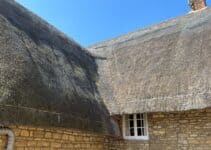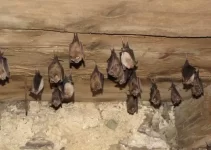UK citizens might think thatched roofs are quintessentially British but, of course, we’d be wrong. Buildings with thatched roofs have been around for millennia and are part of the history and culture of many communities.
But are there any thatched roofs in Australia? Yes, there are thatched roofs in Australia. Indigenous Australians used thatch to weatherproof their properties by using suitable materials that were to hand.
These communities used different methods and different materials to thatchers in Britain and around the world.
But rural people the world over thatched their homes using what was locally available because it was cheap and easy to replace.
But we do have to put aside the idea that thatched roofs in Australia are similar to thatched cottages that are part of the chocolate-box idea of British rural life.
They are not. So to learn more about the types of thatched roofs found in Australia in the past and present, we need to delve deeper into the use of thatch ‘down under’.

Can You Have a Thatched Roof in Australia?
You can have thatched roofs anywhere. And you can certainly expect to see thatched roofs in Australia. They are rarer in Aus than in other countries, though.
And as with most areas of the world, you are quite likely to see thatch used on rural or heritage dwellings.
In modern or urban settlements you are more likely to find thatched roofs used in feature buildings, such as bars or pool houses, but these are often more about aesthetics than practicality.
Modern buildings tend to use roofing materials that are fire-resistant and scientifically balanced for both insulation and ventilation.
Using thatch on modern architecture might not only look strange but would be difficult to maintain on certain buildings and expensive to insure.
Not only this but unlike modern roofing, thatching requires niche tradesmen whose skills are rightly expensive.
Thatch is also costly to maintain and, depending on the climate and weather conditions of the Australian territory you’re in, thatch might even be impractical.
To see why thatch is more rare in Australia than it is elsewhere we’re going to have to look to the country’s past, culture and climate.
Why is Thatch in Australia Quite Rare?
Let’s go back to the use of thatch by the inhabitants of various territories of mainland Australia before colonisation. Because Australia is continental in its scale, the indigenous people from various areas used different types of thatch for different purposes.
Those people in many areas of the country which is considered ‘the oldest, flattest, and driest inhabited continent, with the least fertile soil’ used thatch for shade more often than shelter from wind and rain.
But because the peoples of Australia were distinct communities, their methods of dwelling construction and thatching were designed to suit whatever their environment happened to dictate.

What Were the Traditional Thatched Dwellings of Australia?
This is especially true of the Gunyah, Humpy, or Wurleys which are domed or piqued structures that use whatever vegetation is close at hand. This might be palm, branches or scrub, or leaves and grasses.
Whether these can be considered to have a thatched roof is up for debate because the entire structure is constructed from natural materials. So it might be better to consider these domed buildings as entirely thatched.
The problem with pinpointing the breadth of thatched roof design and construction across the whole country is immensely difficult.
This is partly because the buildings are semi-permanent and made of natural materials that rot away. And partly because until recently, indigenous traditions weren’t recorded or investigated with much rigour.
How Did Thatched Roofs Change in Australia After Colonialisation?
The kind of thatch roofs that people from the UK are familiar with were constructed in certain territories of Australia but this style is considered ‘Colonial Thatch’.
It was used by the first colony of settlers to Australia and blended the thatching techniques of the UK and Europe with the materials used by the indigenous population.
As British colonisation of Australia progressed, buildings became more permeant and took on similar shapes to single-story rural dwellings in Britain and Ireland.
This included the thatched roof style that is common in the British Isles, including a timber frame, pitched roof and thatch tied to joists and topped by the ridge for added weatherproofing.
Arable farming became established in certain colonised areas and the wheat production added to the availability of this as an additional thatching material.
And because many indigenous people were forced into reservations or enclosures, many of their traditional dwelling types were lost to colonialisation.
Are Thatched Roofs Used in Modern Australian Properties?
The subsequent population boom in Australia since the post-war years has required a rapid expansion in housing.
And because traditional thatched roofs require constant maintenance and are prone to animal damage, rot easily and are highly inflammable it’s easy to understand why their popularity had waned.
The most likely place you will find a thatched roof in Australia is for a garden or occasional structure of some kind. Pergolas, outdoor bars, or garden rooms are popular choices to add a thatched roof to.
And many holiday resorts like to amplify the ambience of their buildings by adding thatch to create an exotic paradise.
But just because thatched roofs have not been a popular choice for domestic housing in Australia in the last century, it doesn’t mean they are not an option for the right type of home.
Many people are looking at greener building choices and ways of incorporating sustainable materials into house design. And that’s why thatch is finding a slight resurgence in popularity.
The lifespan for thatch in Brisbane and Melbourne is roughly 50 years which is standard for most thatched roofs. And thatch acts as a natural insulator which can keep properties cooler in summer.
It’s a greener choice than running air conditioning throughout the day.
And there’s no denying that factoring in a thatched roof into the design of a modern property would certainly have the wow factor.
And adding a thatched roof would also act as a nod to the traditions of the indigenous people of Australia and link the present with the past.




